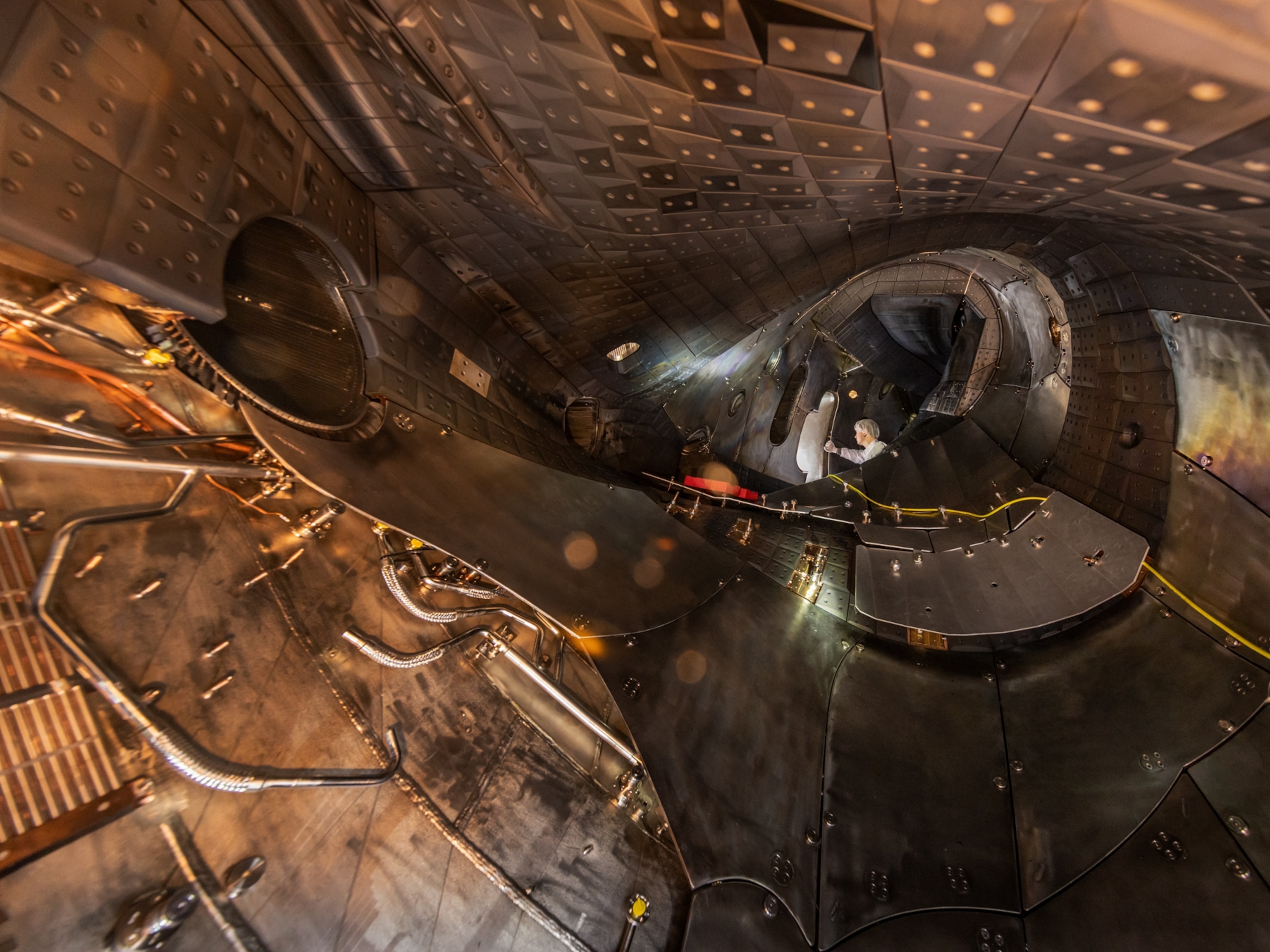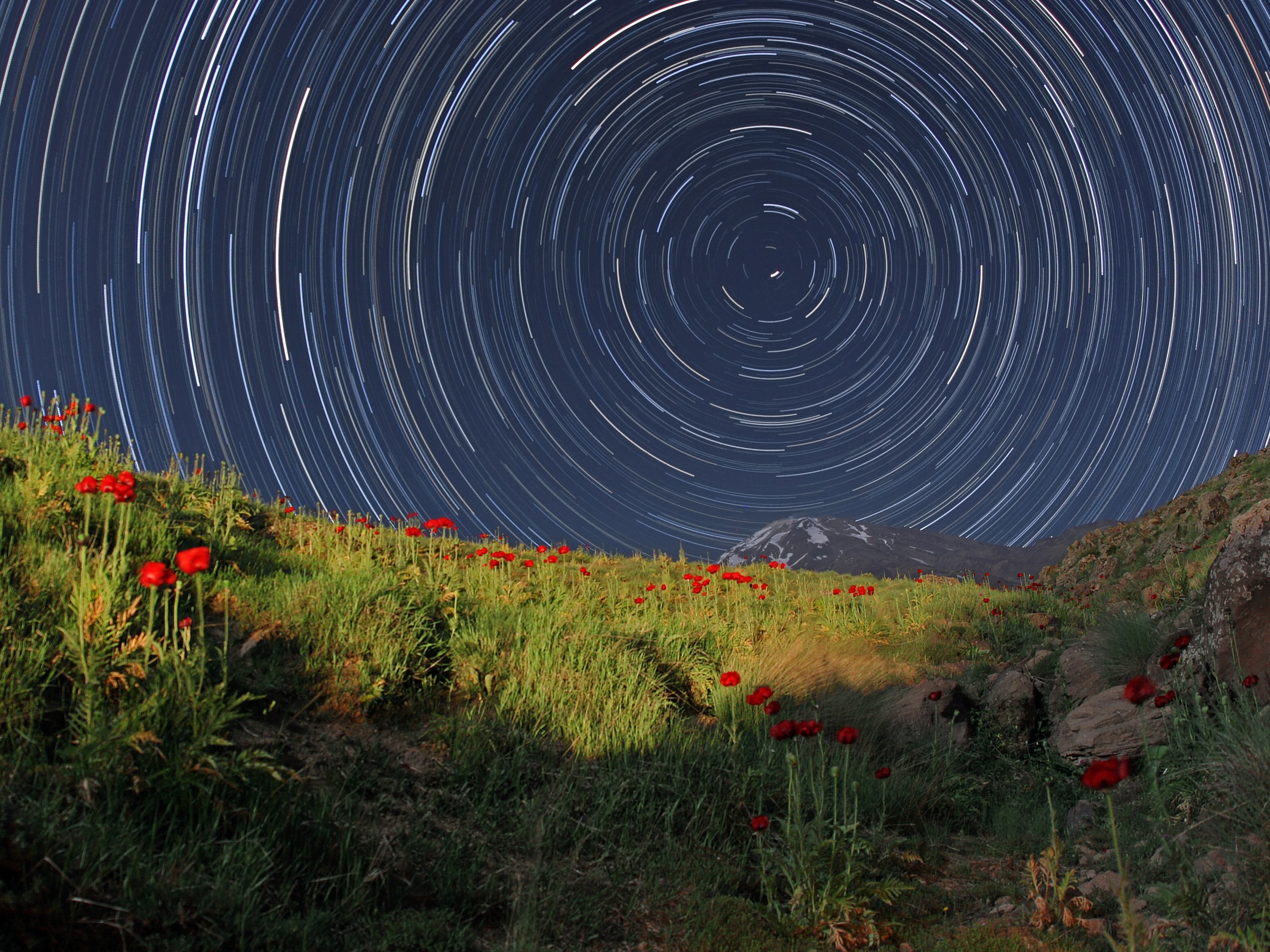
Laser Facility Blasts Way to Fusion First
Fusion experiment is at least ten times more powerful than previous events, study says.
Energy researchers report a tenfold increase in power from laser fusion experiments in a study released Wednesday, a step closer to someday bottling the power of the sun.
The report from the U.S. Department of Energy's $3.5 billion National Ignition Facility (NIF) at the Lawrence Livermore (California) National Laboratory comes after a decade of disappointments. (See: "Fusion Energy Quest Faces Boundaries of Budget, Science.")
The report offers encouragement to long-frustrated efforts to harness fusion, which provides the punch in hydrogen bombs, as a plentiful source of pollution-free nuclear energy.
In the new experiments reported in the journal Nature by a team led by LLNL physicist Omar Hurricane, 192 high-powered lasers were fired at a gold-plated, hollow pill called a hohlraum. The hohlraum was coated on its inside wall with a tiny bit of frozen H-bomb fuel—a mix of heavy hydrogen isotopes isolated from seawater. The laser beams crushed the fuel, triggering a fusion reaction.
Overall, the experiments produced about 17 kilojoules of energy, "about the same as a skier going downhill at 36 miles [58 kilometers] per hour," Hurricane said. "We're talking about fusion energy coming out, more energy than was put into the fuel."
However, though the output exceeded the energy actually delivered to the fuel by the lasers, it was only about one percent of the total energy used to fire the lasers and in the rest of the experiment. "We're going to keep pushing," Hurricane said.
More heartening than the energy output were the signs of radioactive alpha particles seen emerging from the laser "shots" in the experiments. Energetic alpha particles colliding with fuel atoms and each other are the key to a self-sustaining fusion chain reaction—the "ignition" that is the goal of the National Ignition Facility.
But it will take a lot more of them. "This is a first step along the way to ignition, and the scientists are justly excited about it," said Charles Seife, author of Sun in a Bottle: The Strange History of Fusion and the Science of Wishful Thinking. "While this is an advance, it's still far short of what was expected of the NIF machine, and leagues away from anything that might be useful for generating energy."
Military Origins
Efforts to spark fusion reactions by rapidly compressing H-bomb fuel capsules with lasers were declassified in 1972. Laser fusion is not the only approach to fusion power; magnetically confined fusion, its main rival, has an even longer history and is the approach being taken at the ITER experimental power plant that is now under construction in southern France.
In laser fusion, the laser beams strike the interior walls of a hohlraum, releasing x-rays that crush the fuel atoms together to a density 100 times that of lead. That sparks a fusion explosion. The laser shots last only about 150 trillionths of a second.
By design, these shots mimic the reactions inside hydrogen bombs (which use small A-bombs powered by nuclear fission to generate the x-rays needed to create fusion). The NIF is part of the U.S. National Nuclear Security Administration's nuclear weapons complex. Its military role is to gauge the integrity of the U.S. nuclear weapons "stockpile" without conducting weapons tests, which ended in 1992.
In 2012, after a three-year effort to trigger ignition ended in failure, the NIF drew Congressional scrutiny and criticism from the Government Accountability Office. Those earlier attempts relied on laser shots that ramped up their power over the brief duration of the fusion reaction. (See related blog post: "Fusion: Maybe Less Than 30 Years Away, but This Year Unlikely.")
In the new experiments, the NIF team followed the opposite strategy, cranking up the laser power at the beginning and then ramping down. The idea was to spark the fusion reaction and then provide just enough energy to maintain it, Hurricane said.
The result was a more stable fusion reaction that produced the roughly tenfold increase in energy over past shots, as well as signs of the coveted alpha particles, Hurricane said.
The experiments "have cleared a hurdle on the road to nuclear fusion in the laboratory," said physicist Mark Herrmann of the Energy Department's Sandia National Laboratories in Albuquerque, New Mexico. "To be clear, much work remains to be done," he added in a commentary accompanying the report.
No Predictions
Fusion power promises at least two advantages over other energy sources, according to the U.S. National Research Council: zero pollution and virtually unlimited energy. But over the last half century, fusion power has acquired a reputation as a technology forever two decades away.
Seife remains skeptical. "The entire history of laser fusion at Livermore is one machine after another failing to live up to expectations set by simulations and overoptimistic scientists," he said.
Whether the new approach at the NIF will ever produce ignition is an "open question," Herrmann said. The NIF team says it has to double the pressure on the hydrogen fuel in their experiments to trigger such an event. (Take the quiz: "What You Don't Know About Space-Age Energy.")
"I wish we could put a date on it," Hurricane said. "It really is research. We'd be lying to you if we told you a definite date."
Follow Dan Vergano on Twitter.
This story is part of a special series that explores energy issues. For more, visit The Great Energy Challenge.







